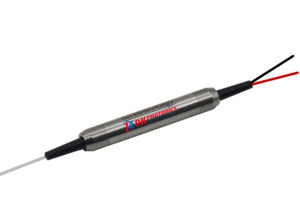Polarizing Beam combiners / splitters are the devices used to combine two polarized light signals or split single non-polarized light into two polarized parts. These combiners and splitters are designed and developed to split light beams by deploying the polarization state and not by wavelength or intensity.
The polarizing beam splitters / combiners typically have 0° or 45° angle of incidence and a 90° division between the beams; this generally depends on the configuration. There are two types of Polarization beam combiners and splitters; these are described below:
- Incoherent Polarization Combining / Splitting
The Incoherent combining or splitting is the simpler variant and the basic technique. In this method, the resulted beams of two broad area laser diodes are sent onto a thin-film polarizer so as to reflect one of the beams while transmit the other; both of these beams then propagate in the same direction. As a result, one attains an unpolarized beam (with the combined optical power of the input beams) and the same beam quality. Consequently, the brightness gets nearly doubled.

This technique is often used for any-a-applications, for instance, end-pumping of a solid state laser with an increased power. However, the technique is not suitable for power scaling.
- Coherent Polarization Combining / Splitting
With coherent beam combining or splitting it is viable to attain a linear polarized state in the output, if two mutually coherent beams are combined. If two ports have the equal input powers, the output polarization would be typically rotated by 45° -depending on the polarization direction of any of the input beams.
Also, the coherent polarization combining can be repeated several times because of the linear output polarization. Thereby, this technique is suitable for power scaling.
A polarization beam combiner and splitter is often used in photonics instrumentation, optics and semiconductors to transmit p-polarized light while reflecting s-polarized light. These hold a world of worth when it comes to optics, telecommunication and fiber applications, and make the working effective as well as effortless.
No comments:
Post a Comment